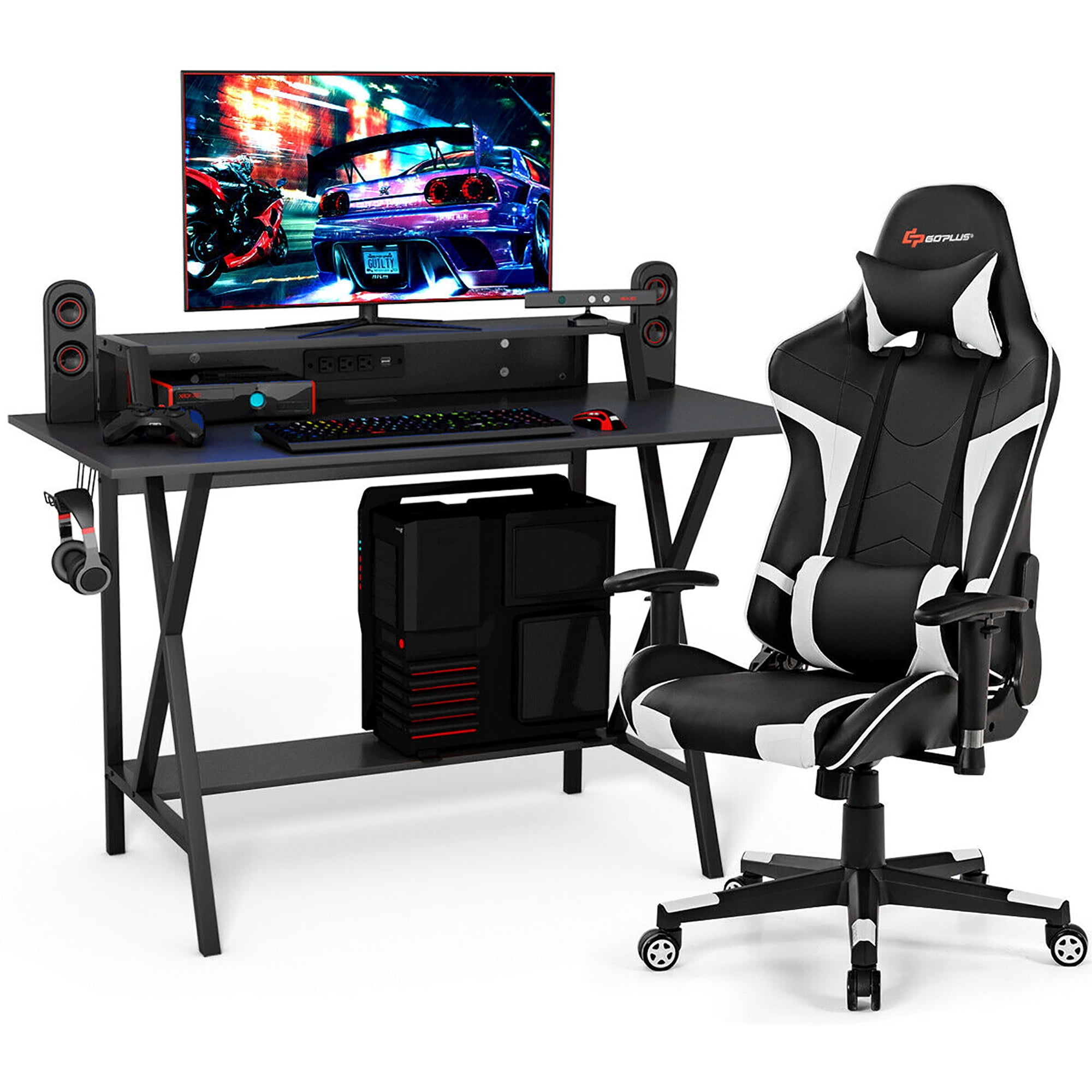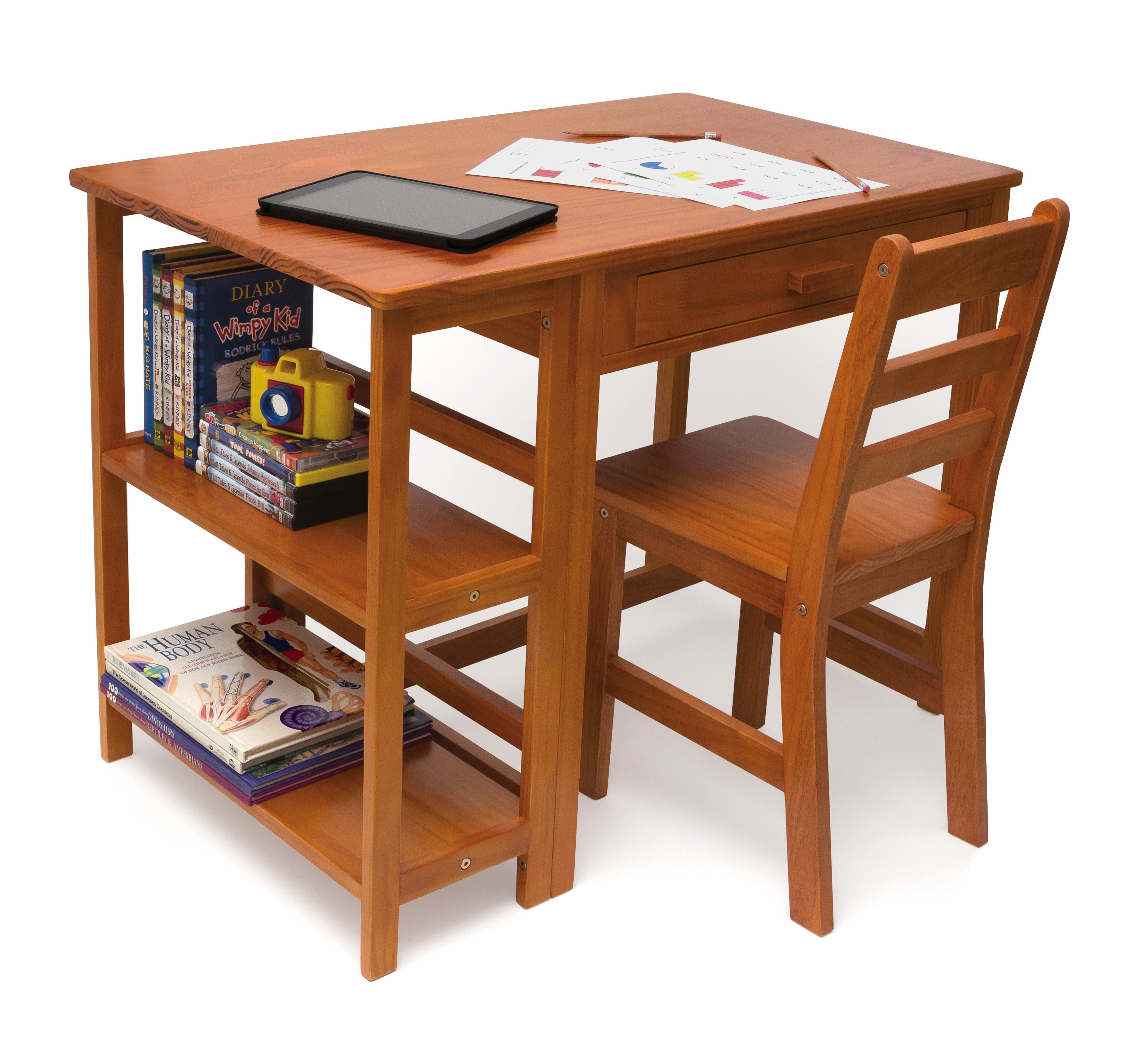Popular Computer Desk and Chair Combo Styles

The selection of a computer desk and chair combo significantly impacts both productivity and well-being. A well-chosen setup promotes good posture, reduces strain, and enhances the overall work experience. This section explores various popular styles and design considerations for creating an effective and aesthetically pleasing home office environment.
Computer Desk and Chair Combo Setups for Home Offices
The following table details three distinct computer desk and chair combo setups designed for different aesthetic preferences within a home office setting. Each setup considers both functionality and style to create a cohesive and comfortable workspace.
| Desk Style | Chair Style | Materials | Overall Aesthetic |
|---|---|---|---|
| Minimalist Floating Desk with integrated cable management | Ergonomic Mesh Task Chair with adjustable lumbar support | Light oak wood, steel, breathable mesh fabric | Modern Minimalist: Clean lines, neutral colors, emphasis on functionality and space-saving design. |
| Traditional Wooden Desk with multiple drawers and ornate detailing | Leather Executive Chair with high back and padded armrests | Solid mahogany wood, genuine leather, brass hardware | Traditional: Classic design elements, rich colors, emphasis on craftsmanship and elegance. |
| Gaming Desk with RGB lighting and ample surface area | Gaming Chair with high backrest, adjustable armrests, and headrest | High-pressure laminate, PU leather, metal frame | Gamer: Bold colors, RGB lighting, focus on comfort and functionality for extended gaming sessions. |
Ergonomic Chair Features in Computer Chair and Desk Combos
Ergonomic features are crucial for maintaining comfort and preventing injuries during prolonged computer use. The following are five common features found in high-quality ergonomic chairs.
Computer desk and chair combo – These features, when combined effectively, contribute significantly to user comfort and health, minimizing the risk of musculoskeletal problems associated with prolonged sitting.
- Adjustable Lumbar Support: Provides customized support for the lower back, promoting proper spinal alignment and reducing strain. This feature allows users to adjust the level of support to match their individual needs and back curvature.
- Adjustable Height: Allows the chair to be adjusted to the appropriate height relative to the desk, ensuring proper posture and minimizing strain on the neck and shoulders. This is crucial for aligning the eyes with the monitor to avoid neck strain.
- Adjustable Armrests: Provide support for the arms and elbows, reducing strain on the shoulders and wrists. Adjustable armrests allow users to position their arms comfortably, reducing fatigue and promoting proper posture.
- Breathable Fabric: Promotes airflow and prevents overheating, ensuring comfort during extended use. Materials such as mesh fabric are particularly effective in dissipating heat and moisture.
- Headrest: Provides support for the head and neck, reducing strain and promoting proper posture, especially during long periods of work. A well-placed headrest can significantly alleviate neck tension.
Material Choices for Computer Desks
The choice of material for a computer desk significantly influences its style, durability, and overall aesthetic appeal. The following table compares the properties of three common materials: wood, metal, and glass.
| Material | Pros | Cons | Best Use Case |
|---|---|---|---|
| Wood | Natural beauty, durability, warmth, can be customized with various finishes. | Can be more expensive, susceptible to scratches and water damage, requires regular maintenance. | Traditional and modern styles; offices valuing a natural aesthetic. |
| Metal | Durable, sturdy, easy to clean, modern aesthetic. | Can be cold to the touch, prone to dents and scratches, may require additional padding for comfort. | Modern and industrial styles; offices prioritizing durability and a clean look. |
| Glass | Sleek, modern aesthetic, easy to clean, visually appealing. | Fragile, prone to scratches and smudges, may require a protective mat underneath. | Modern and minimalist styles; offices prioritizing a clean, uncluttered look. |
Factors to Consider When Buying a Computer Desk and Chair Combo

Selecting the right computer desk and chair combo is crucial for comfort, productivity, and long-term health. A poorly chosen setup can lead to musculoskeletal issues, reduced efficiency, and overall discomfort. Careful consideration of several factors ensures a workspace optimized for well-being and performance.
Ergonomic Considerations for Computer Desk and Chair Combos
Ergonomics focuses on designing workspaces to minimize strain and maximize comfort. Ignoring ergonomic principles can result in chronic pain and injuries. The following five considerations are paramount when choosing a desk and chair combo:
- Chair Adjustability: A chair with adjustable height, lumbar support, and armrests is essential. Height adjustment allows proper positioning of the thighs parallel to the floor, preventing pressure on the legs and back. Lumbar support maintains the natural curve of the lower back, reducing strain. Adjustable armrests provide proper elbow support, preventing shoulder and neck tension. A lack of these adjustments can lead to poor posture, back pain, and carpal tunnel syndrome.
- Desk Height: The desk height should be adjusted so that your elbows are at a 90-degree angle when typing. Too high a desk forces the shoulders to hunch, and too low a desk strains the wrists and neck. An adjustable desk is ideal to accommodate various users and tasks. Incorrect desk height can contribute to neck pain, shoulder pain, and carpal tunnel syndrome.
- Monitor Placement: The monitor should be positioned directly in front of the user, at arm’s length, with the top of the screen at or slightly below eye level. This prevents neck strain from looking up or down constantly. Improper monitor placement can lead to neck pain, headaches, and eye strain.
- Keyboard and Mouse Placement: The keyboard and mouse should be positioned close to the body, allowing for relaxed wrists and elbows. Avoid reaching or twisting, which can strain muscles and joints. Poor keyboard and mouse placement can contribute to carpal tunnel syndrome, tendonitis, and other repetitive strain injuries.
- Chair Back Support: The chair back should provide adequate support to maintain the natural curvature of the spine. A chair with adjustable lumbar support allows customization to fit individual back shapes and sizes. Insufficient back support can lead to lower back pain, muscle fatigue, and poor posture.
Pre-Assembled vs. Individual Components, Computer desk and chair combo
Choosing between a pre-assembled combo and buying individual pieces involves weighing several factors.
- Pre-assembled Combos:
- Benefits: Convenience, often lower initial cost, coordinated aesthetic.
- Drawbacks: Limited adjustability, may not perfectly fit individual needs, potentially lower quality materials.
- Individual Components:
- Benefits: Greater customization, higher quality materials often available, better adjustability for optimal ergonomics.
- Drawbacks: Higher initial cost, requires assembly, potential for incompatibility between desk and chair styles.
Adjusting Chair and Desk Height for Optimal Ergonomics
Proper adjustment of chair and desk height is crucial for maintaining good posture and preventing musculoskeletal problems. The ideal setup varies depending on individual body type and work style.
For example, a taller individual will require a higher desk and chair than a shorter person. Someone who primarily uses a keyboard will need a slightly lower desk than someone who uses a standing desk converter and frequently switches between sitting and standing. The goal is always to maintain a neutral posture, with elbows at a 90-degree angle when typing, thighs parallel to the floor, and the monitor at eye level. For someone who is 5’4″ and primarily sits, the chair height should be adjusted so that their feet are flat on the floor, and their thighs are parallel to the floor. The desk height should then be adjusted so that their elbows are at a 90-degree angle while typing. For a 6’2″ individual, the chair and desk will need to be higher to maintain the same ergonomic principles. Regular adjustments may be necessary depending on the tasks performed and the use of standing desks or other ergonomic accessories.
